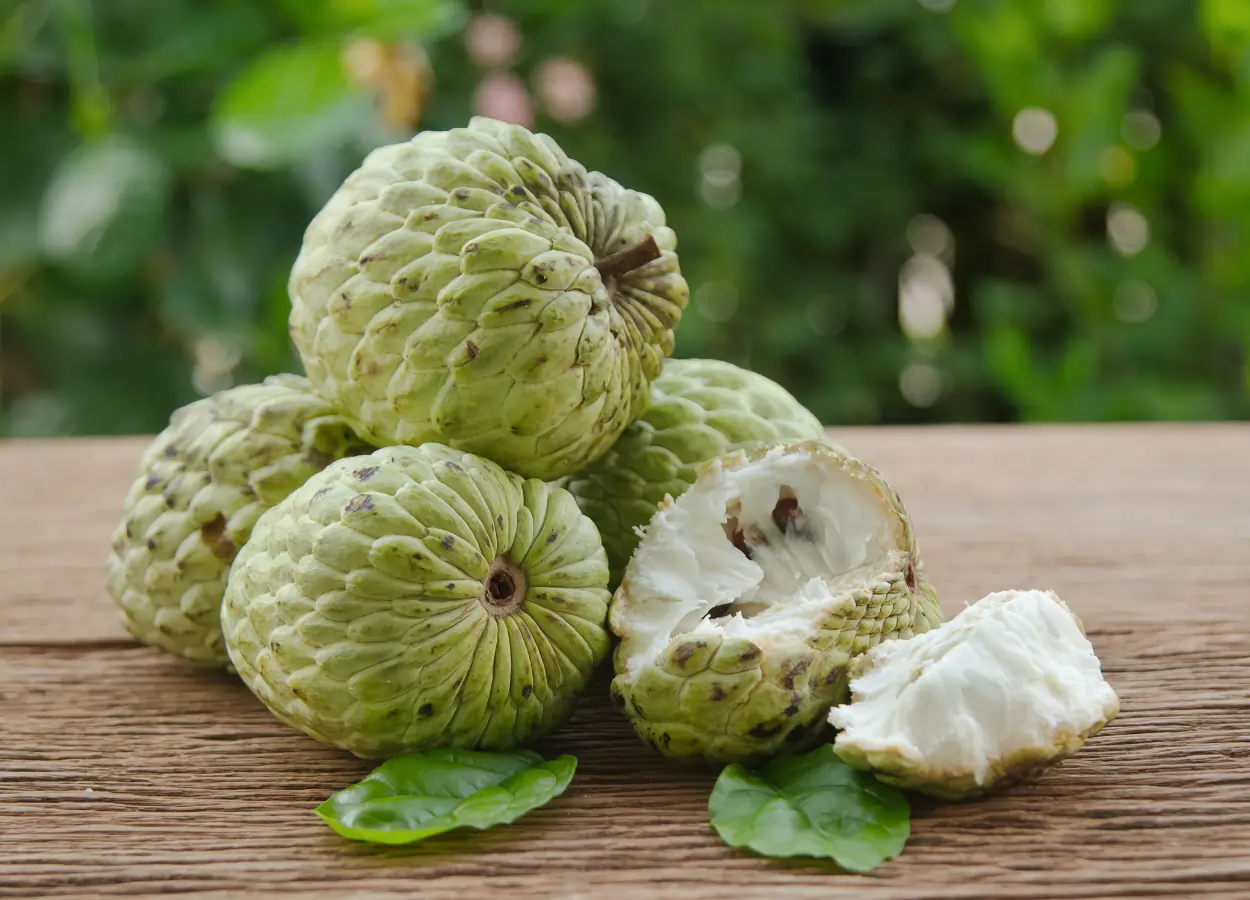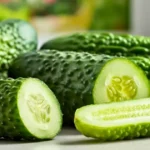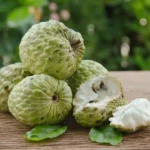Introduction to Custard Apple
A custard apple is like a bite of pure, natural sweetness, as every person who has ever eaten one can tell you. This fruit tastes like a cross between a banana and a pear, with a hint of vanilla. This deliciously creamy fruit has a flavor profile that combines banana, pear, and a touch of vanilla.
It is very sweet and delicious. Welcome to the ultimate destination for discovering the delightful world of this mouthwatering fruit! Discover the secrets of custard apples with this comprehensive guide, designed to enhance your culinary expertise and indulge your taste for this delightful tropical fruit.
What is a Custard Apple?
– Definition and Botanical Classification
The custard apple, or Annona squamosa, is a member of the Annonaceae family. This engaging family characteristic includes a variety of other fruits, such as soursop and cherimoya. The custard apple boasts a unique green, scaly outside that encases its delicious, creamy white inside. It is a fruit that everyone should experience at least once!
A quick note:
Custard apple includes various varieties, yet they all boast that delightful taste and texture.
With their creamy inside and fantastic fragrance, custard apples are exceptional treasures in the fruit world.
– Common Names and Variations
In many places, especially in the Caribbean and some parts of Latin America, they are sometimes called “sugar apples.”
In India, they are called “sitaphal” or “Sharifa,” and they are an important part of the food there. The fruit often looks a little different with these different names, but all of them have the same delicious, sweet taste that makes many people love custard apples.
– Countries Where It is Primarily Grown
Warm, tropical, or subtropical conditions are ideal for custard apple growth. They are primarily cultivated in countries like:
- India: This nation is one of the biggest producers of custard apples, which are used in various drinks and sweets.
- Mexico: Mexico’s rich, fertile land provides an ideal environment for cultivating various crops, such as custard apples.
- Thailand: Custard apples from Thailand are very popular in local stores and are often used in traditional sweets.
- Australia: In Australia, these fruits are usually eaten fresh and grow well in several places.
I know how much fun it is to share these fruits when they are fresh and cold on a hot day. You could be with friends, cut open a custard apple, and tuck into that sweet, creamy treat! As lovely as the fruit itself, it brings back wonderful memories.
Searching local markets for custard apples is like a treasure hunt, but it’s worth it. How wonderful is locating a perfectly ripe custard apple and tasting its unique flavor?
“All other fruits dull in comparison after experiencing the wonderful taste of a custard apple!”
After reading this guide, you will know what custard apples are and how to enjoy them.
The choices are endless, whether you want to learn how to choose the best or try different recipes with this delectable fruit. Explore the delicious world of custard apples!
Historical Background
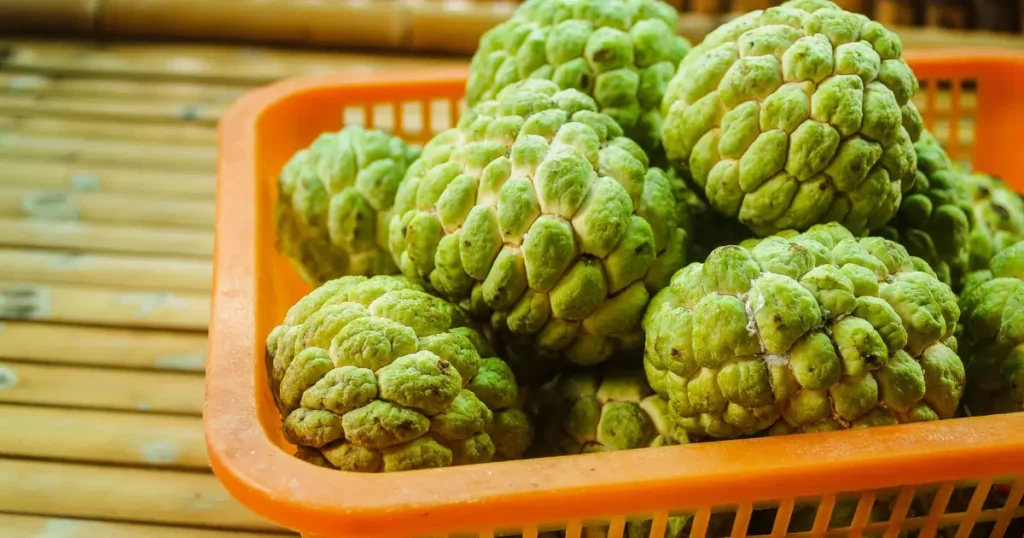
History of Origin and Cultivation
- Native Region: The Custard apple (Annona squamosa) branch likely originated in tropical Central America and the West Indies.
- Use by Native Americans: In its native area, it was a common fruit eaten by locals who liked the sweet taste and healthy pulp.
- Introduction to Other Countries: In the 1600s, Portuguese and Spanish travellers brought custard apples to Africa and Asia along the trade routes connecting the world.
- Adaptability: Fruits do best when they are warm and partly dry, so they can be grown anywhere in the world, whether temperate or subtropical.
- Key Cultivating Countries: India now grows more custard apples than any other country. States like Maharashtra, Gujarat, and Tamil Nadu are especially good at it. Thailand, the Philippines, and some parts of South America and Australia are also big providers.
- Vigorous Plant: Custard apple is an essential crop for farmers in dry and semi-dry areas because it thrives in soils with little rainfall.
- Modern Cultivation: Some changes to farming methods, like grafting and selected breeding, have led to higher yields and better food quality, making farming more beneficial.
Also Read:- Grandma Home Remedies For Weight Loss
How Different Cultures Have Used It Traditionally
In many places, custard apples are valued not only as tasty fruits but also for their cultural and medical uses.
- India: Indian Ayurvedic medicine has used custard apples, also called sitaphal, to treat various illnesses. Because they are rich in nutrients, the fruit is thought to give you more energy, help your stomach, and help with anaemia. People often put the leaves on wounds to help them heal, and the seeds are ground up and used as insecticides.
- African: In many African countries, custard apple is used in traditional medicines because it is good for you. The seeds have been used as a natural herbicide despite being poisonous. People with diarrhea or fevers sometimes make drinks from the bark and leaves.
- Latin America: Native Americans have eaten custard apples as a large part of their diet for hundreds of years. You can immediately eat the pulp or use it to prepare sweets and beverages. In traditional medicine, the leaves and bark are used because they are thought to kill germs and ease pain.
- Southeast Asia: Custard apples have long been used to treat coughs and upset stomachs, especially in the Philippines and Thailand.
- Caribbean: Fruit is an essential food from a particular place. It is also used in traditional drinks and sweets. Some people make tea from the leaves to calm down.
People from all over the world have loved custard apples for their many uses. They are suitable for you, can be used as medicine, and are helpful in traditional ways.
Impact local economies
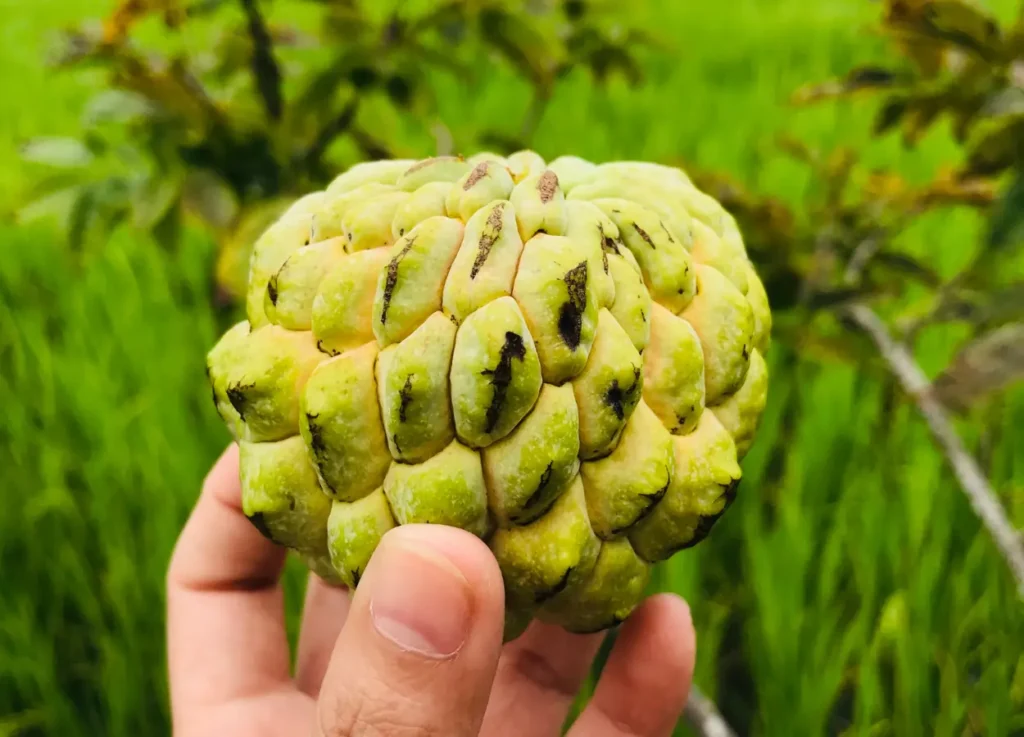
- Creating jobs: Growing custard apples creates jobs for farmers, helpers, and people who pick, sort, and package the apples, especially in rural areas.
- Income for Small-Scale Farmers: Custard apples are an essential source of income for small farms. They grow in wet or mostly dry environments and require minimal care.
- Support for agriculture: The fruit’s popularity in domestic and international markets drives related businesses, such as cold storage, transportation, and pulp and juice production units.
- Export Income: India and Thailand receive funds for various purposes when they export custard apples to regions such as the Middle East, Europe, and North America.
- More useful things: Custard apples can also be used to make drinks, jams, and sweets, which is good for small businesses and home-based companies.
- Buy and sell by-products: Off-shoots can be bought and sold. Natural poisons, medicines, wood, leaves, and seeds can support small businesses and serve niche markets.
- Economic Resilience: Growing custard apples is a safe way to make money in places that lack water. The plants can live without water and don’t need much care.
Hi there! I’m content writer and blogger. With over two years of experience, I’ve shared my passion for writing across various platforms. I firmly believe in the transformative power of words and look forward to sharing this journey with you. Enjoy my work!
